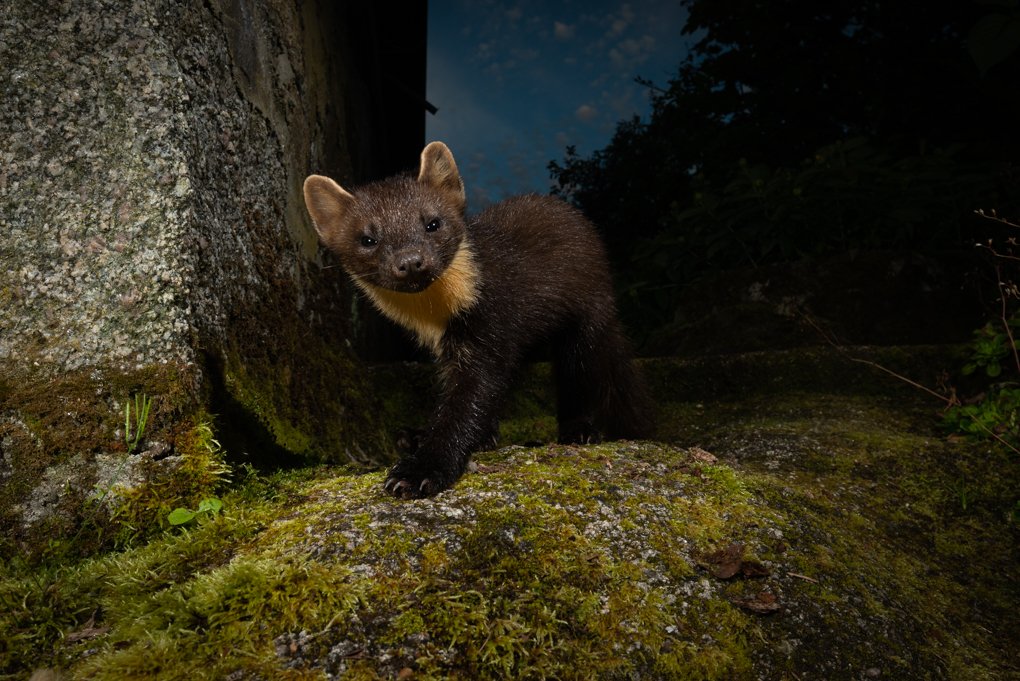Well it’s been a long time since the first post, but in an effort to not be so reliant on social media pages I’m going to resurrect this blog page. I thought to begin with, a few images of Pine Martens. Taken using a DSLR camera trap, on a recent trip to the Ardnamurchan peninsular in the West of Scotland.
Setting up the DSLR camera trap. Image credit Dan Trim.
As can be seen from the above image, a DSLR camera trap is different to a trail cam. Using a DSLR camera allows me to get high quality images, good enough to send to photographic libraries or produce prints from. I’ve seen a lot of over complicated DSLR camera trap setups on places like Youtube, it really doesn’t have to be complicated. I use an infra red trigger to fire my camera when the animal in question breaks the beam and a trigger on the hot shoe of my camera to fire 2 or 3 flashes to light the scene. You pre focus on the exact spot the animal will break the infra red beam (this can be done by triggering your camera using your hand to break the beam). Normally I like to use my camera in manual setting when camera trapping. A beginning setting would be iso 200, 1/250th shutter speed and F13. This should give you a black image when a picture is taken without flash. It’s then a simple task to gradually light the scene by adding flashes one at a time until you like the lighting. Flashes are normally set at between 1/16th and 1/64th power. A misconception is that the flashes will scare the animals. Over many years of camera trapping Mustelids (Polecats, Badgers and now Pine Martens) I can hand on heart say this is not the case, especially at the low powers I use flashes. Often my cameras have been triggered 50, 60 or more times during the night. I have also run my DSLR camera trap in conjunction with a trail cam when photographing Polecats, reviewing the video footage from that, the Polecats don’t even look up when the camera and flashes are triggered.
Below are a few images taken the other week.
The first camera trap image of the trip and a perfect pose. The blue hour sky a bonus.
Pine Marten investigating an old tool shed. The last image of 50 or 60 taken during the night. If you look carefully at the bottom left hand corner, you’ll see a smudge mark, caused by a Pine Martens nose as he investigated my lens during the night.
A slightly different angle, I love the way his paw is lifted up as he sneaks in.
Sneaking into a gamekeepers hut.
Coming in for a drink, balancing natural light with flash. I only had one night to work on this image, wish I had a little longer.
To finish off I thought I’d add a gear list of the equipment I use. Nothing sponsored, all brought and paid for.
Camera Nikon D800
PIR trigger and camera housing by Camtraptions.
Flashes and trigger for flashes, cheapest Yongnuo’s. Plastic sandwich bags to protect them from the rain.
A selection of cheap tripods or bank sticks to mount the flashes and PIR trigger. As can be seen, this way of photographing wildlife is a lot cheaper than buying a long lens. It also, in my opinion gives a lovely look to the image.







